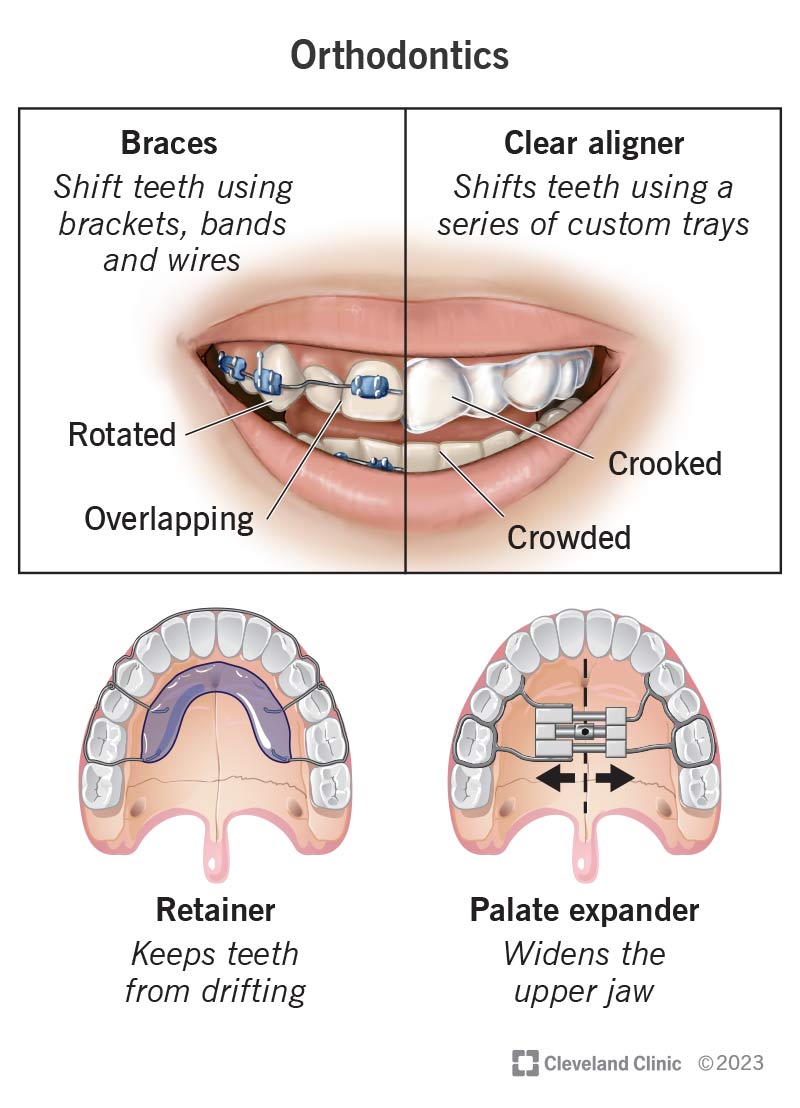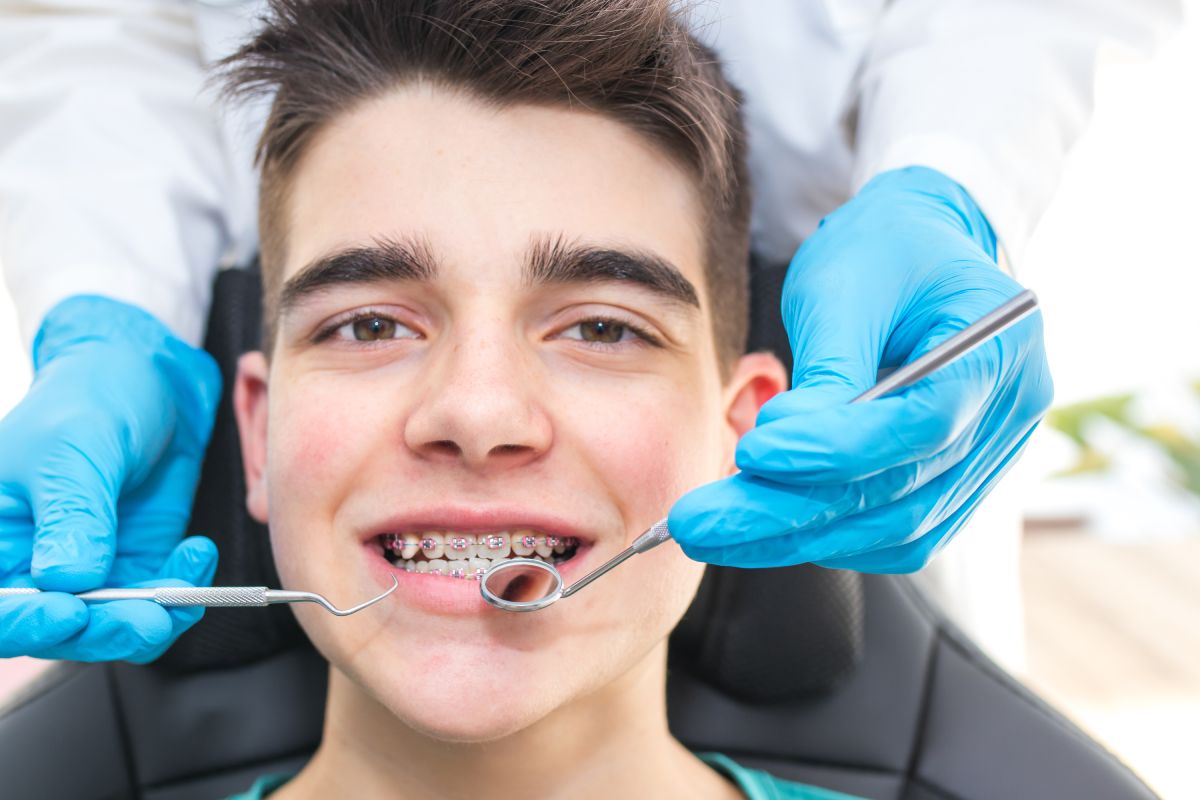Causey Orthodontics Fundamentals Explained
Causey Orthodontics Fundamentals Explained
Blog Article
Some Known Questions About Causey Orthodontics.
Table of ContentsWhat Does Causey Orthodontics Do?Getting The Causey Orthodontics To WorkThe Causey Orthodontics DiariesThe Only Guide for Causey Orthodontics9 Easy Facts About Causey Orthodontics Explained
Neglecting occlusal partnerships, it was regular to get rid of teeth for a range of dental concerns, such as malalignment or overcrowding. The idea of an intact teeth was not widely valued in those days, making bite connections seem irrelevant. In the late 1800s, the principle of occlusion was necessary for creating dependable prosthetic substitute teeth.As these ideas of prosthetic occlusion progressed, it ended up being a vital device for dentistry. It remained in 1890 that the work and impact of Dr. Edwards H. Angle started to be really felt, with his contribution to modern-day orthodontics specifically significant. At first concentrated on prosthodontics, he showed in Pennsylvania and Minnesota before guiding his attention in the direction of dental occlusion and the therapies needed to maintain it as a normal problem, thus coming to be referred to as the "papa of modern-day orthodontics".

The idea of perfect occlusion, as proposed by Angle and incorporated into a category system, allowed a change towards treating malocclusion, which is any type of variance from typical occlusion. Having a full collection of teeth on both arches was highly sought after in orthodontic therapy because of the requirement for precise relationships in between them.
The Definitive Guide for Causey Orthodontics
As occlusion ended up being the key top priority, facial percentages and appearances were disregarded - Causey Orthodontics. To accomplish perfect occlusals without using outside pressures, Angle postulated that having ideal occlusion was the best means to gain optimal face visual appeals. With the passing away of time, it became rather noticeable that even an extraordinary occlusion was not suitable when thought about from a visual factor of view
Charles Tweed in America and Raymond Begg in Australia (who both studied under Angle) re-introduced dentistry removal into orthodontics during the 1940s and 1950s so they can enhance facial esthetics while likewise making sure much better security concerning occlusal connections. In the postwar period, cephalometric radiography started to be utilized by orthodontists for determining adjustments in tooth and jaw placement created by development and treatment. It became noticeable that orthodontic therapy might adjust mandibular advancement, causing the formation of functional jaw orthopedics in Europe and extraoral pressure procedures in the US. These days, both functional appliances and extraoral devices are used around the world with the goal of modifying development patterns and forms. As a result, pursuing real, or a minimum of enhanced, jaw partnerships had become the major purpose of therapy by the mid-20th century.
Rumored Buzz on Causey Orthodontics
 The American Journal of Orthodontics was produced for this objective in 1915; before it, there were no clinical objectives to follow, nor any exact classification system and braces that lacked attributes. Till the mid-1970s, dental braces were made by wrapping steel around each tooth. With innovations in adhesives, it ended up being possible to rather bond metal braces to the teeth.
The American Journal of Orthodontics was produced for this objective in 1915; before it, there were no clinical objectives to follow, nor any exact classification system and braces that lacked attributes. Till the mid-1970s, dental braces were made by wrapping steel around each tooth. With innovations in adhesives, it ended up being possible to rather bond metal braces to the teeth.Andrews gave an informative definition of the perfect occlusion in long-term teeth. This has actually had purposeful effects on orthodontic treatments that are administered consistently, and these are: 1. Appropriate interarchal connections 2. Proper crown angulation (suggestion) 3. Correct crown inclination (torque) 4. No rotations 5. Tight call points 6. Apartment Contour of Spee (0.02.5 mm), and based upon these principles, he discovered a treatment system called the straight-wire device system, or the pre-adjusted edgewise system.
The benefit of the design hinges on its brace and archwire combination, which requires just very little wire flexing from the orthodontist or clinician (cheapest orthodontist near me). It's appropriately named after this function: the angle of the slot and density of the brace base eventually determine where each tooth is located with little need for added control
Some Known Factual Statements About Causey Orthodontics
Both of these systems utilized the same braces for each tooth and demanded the bending of an archwire in three planes for locating teeth in their preferred placements, with these bends determining best positionings. When it involves orthodontic home appliances, they are divided into 2 kinds: removable and fixed. Detachable appliances can be tackled and off by the individual as called for.

Thus, mostly all modern set home appliances can be considered variations on this edgewise device system. Early 20th-century orthodontist Edward Angle made a major payment to the world of dentistry. He produced 4 distinct home appliance systems that have been made use of as the basis for many orthodontic therapies today, disallowing a couple of exemptions.
The smart Trick of Causey Orthodontics That Nobody is Discussing

The cable ended in a thread, and to move it onward, a flexible nut was used, which enabled a rise in area. By ligation, each individual tooth was affixed to this extensive archwire (affordable orthodontist near me). Because of its restricted variety of activity, Angle was not able to achieve exact tooth positioning with an E-arch
These tubes held a firm pin, which might be repositioned at each consultation in order to move them in position. Called the "bone-growing appliance", this device was theorized to urge healthier bone development due to its possibility for transferring pressure directly to the roots. Nonetheless, executing it confirmed frustrating in truth.
Report this page